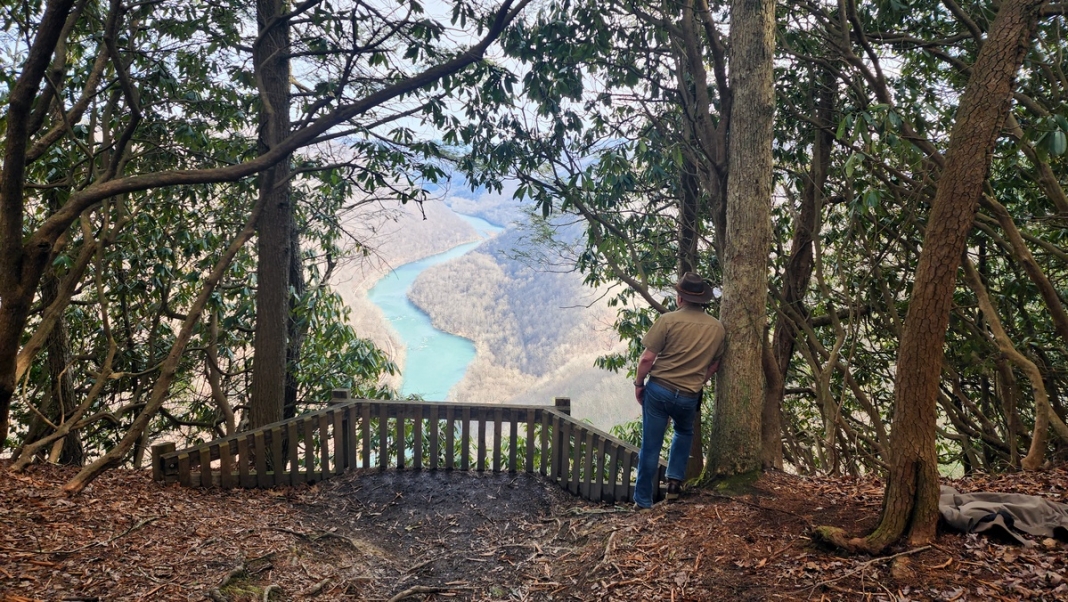DAVIS, W.Va. — An almost 2,000-acre property purchased by The Nature Conservancy in West Virginia is preserving habitat adjoining the Canaan Valley National Wildlife Refuge and will ensure access to outdoor recreation in the Canaan Valley.
Thomas Minney, director of the conservancy in West Virginia, says the ‘Big Cove’ tract in the northern end of the Canaan Valley had been identified as one of the most intact landscape corridors at an intersection of high biodiversity.
From there, officials began engaging the previous landowner, Western Pocahontas Properties, in a discussion about their willingness to work with the conservancy to do the transaction, Minney says.
“The Nature Conservancy has done a lot of interesting science assessments: where are the best places on the land across the Appalachians, and in fact at the North American level, where if we invest in conservation, will have the biggest outcomes for biodiversity and the biggest outcomes for climate impacts?” Minney asks.
The 1,971-acre Big Cove area crowns the northern end of Canaan Valley, and through the A-Frame Road, the land can now be used as a connector into the Canaan Valley National Wildlife Refuge in an envisioned new trail network, according to Minney.
“Big Cove is key because of the A-Frame Road, which people can take to get into the northern end of the Canaan Valley National Wildlife Refuge,” Minney says.
“We’re going to maintain the traditional uses of hiking and mountain biking and things like that as we look to the future about how this tract can be a part of that emerging recreation, conservation, and development vision for Canaan Valley and the Tucker County area,” he continued.
A team of conservancy stewardship staff and volunteers will manage the tract and protect habitat and public access to hunting, fishing, and outdoor recreation while the land is owned by the conservancy, and they will be engaging stakeholders, including the Heart of the Highlands Trail System hiking group, for input, Minney says
The conservancy in West Virginia has protected more than 125,000 acres of critical natural lands in the state so far in the eastern panhandle, southern West Virginia, and the West Virginia highlands, including more than 3,000 acres in the Canaan Valley and Dolly Sods areas.
One of the world’s largest environmental organizations, with a presence in all 50 states and in 72 countries around the world, the conservancy’s mission is to protect the lands and waters on which all life depends, Minney says.
As such, the conservancy team is always identifying the most important areas for both biodiversity and long-term climate resiliency and climate connectivity to potentially purchase additional land.
“We are engaged in protecting those really important places for biodiversity, for climate impact, and we’re engaged in solving some of the world’s most important issues related to quality-of-life, such as tackling climate change and engaging people in natural climate solutions and engaging people in being a part of and living with nature,” Minney says.
Additionally, the conservancy in West Virginia has what Minney calls a “nature and economy approach.”
“That’s one of the reasons this (Big Cove) tract is important—not only because of the biodiversity and the climate impacts that it can have and the consolidation that it does for the northern end of the valley for the U.S. Fish and Wildlife Service, but for us, we see this as a tract that sits in a very dynamic landscape,” he says.
This nature-and-economy approach looks at achieving both the vision for development and the need for conservation, as well as engaging in the right conversations with the right stakeholders.
“So that the important recreational development that’s happening in the Davis and Thomas area gets combined with protecting some of these most important natural assets in a way that’s complementary and can go hand in hand, and that development and conservation are not in conflict; they can actually be complementary to each other,” Minney says.
Canaan Valley is one of the largest wetlands in the central and southern Appalachians, and part of the Big Cove tract includes a portion of this more than 8,400-acre wetland complex. The adjacent Canaan Valley Wildlife Refuge itself is home to more than 500 plant species and nearly 300 animal species.
“Canaan Valley is a really important place,” Minney says. “Not only is it a large wetland complex, but it’s really, really biodiversity intense, so there’s a lot of interesting things going on there.”
A high-elevation valley, sitting at 3,000 feet and above, Canaan Valley is also in the zone of the red spruce northern hardwood ecosystem, which is associated with more than 200 rare, threatened, and endangered species, according to Minney, and it is a circumneutral wetland.
“That means you have a big wetland area that sits on limestone and karst features, and that creates a really interesting environment, particularly for plant species that are there in the valley,” he says. “The area functions a little bit more like Canada than it does here in the central or southern Appalachians.”
Sign up to receive a FREE copy of West Virginia Explorer Magazine in your email weekly. Sign me up!


